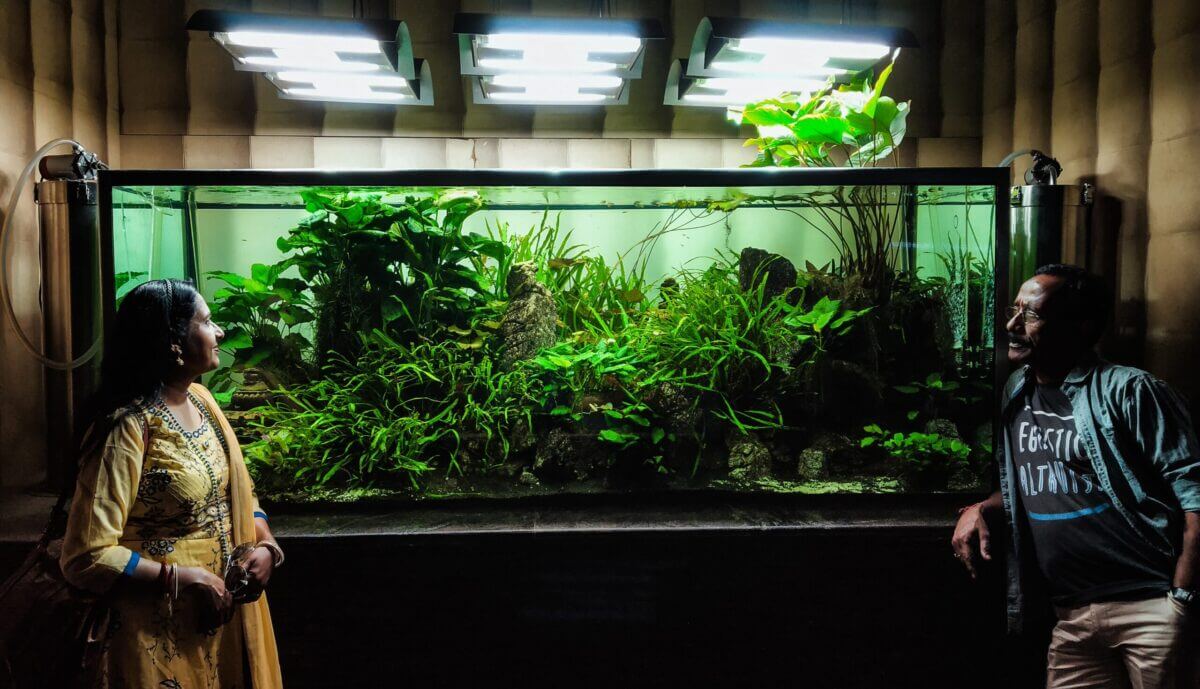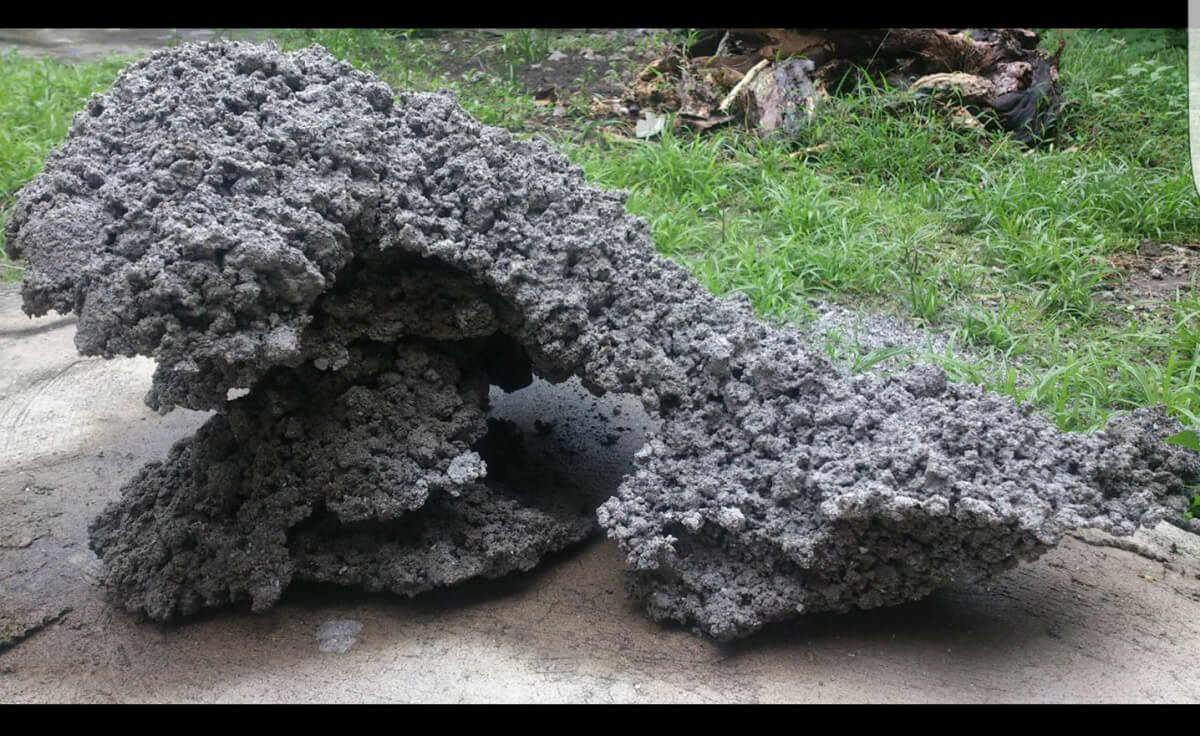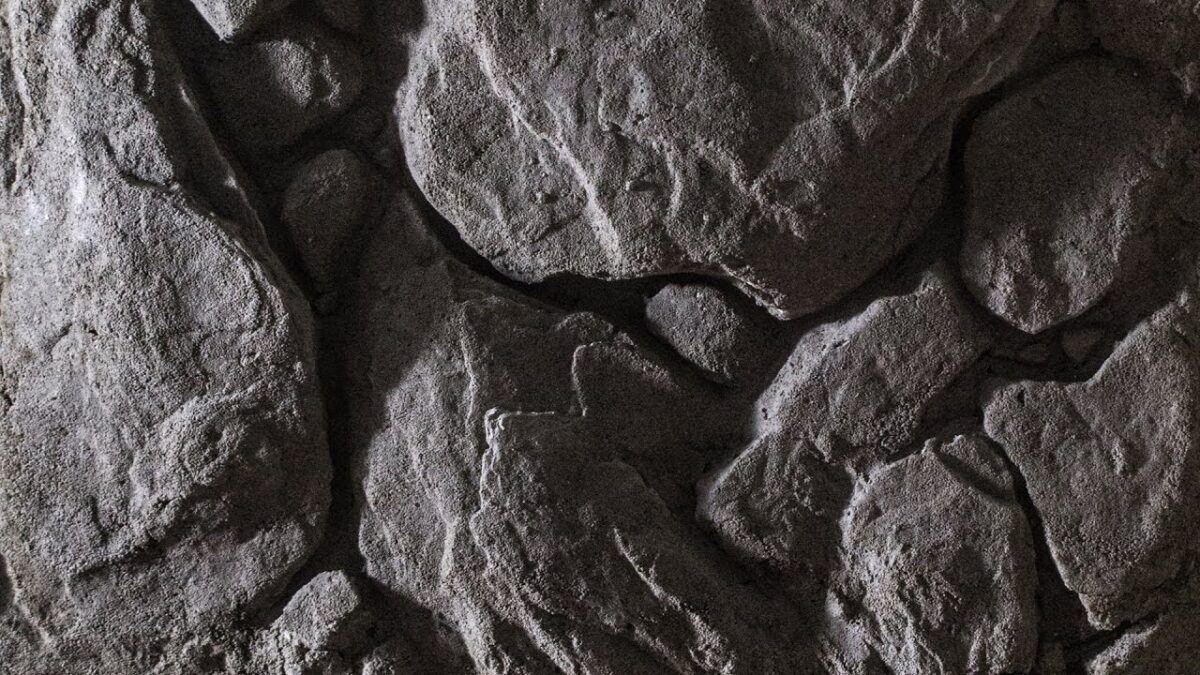Ever gazed into a reef aquarium and felt a surge of awe at the stunning underwater landscape? What if you could craft that dreamy seascape, transforming your aquarium into a mesmerizing marine masterpiece? Imagine the possibilities as we dive into designing and planning your aquarium landscape.
Key Takeaways
Effective Planning and Visualization
A fundamental takeaway is the significance of meticulous planning and visualization in crafting your aquarium landscape. Before introducing any materials into the tank, sketching out your envisioned aquascape or using software to plan the layout can make a substantial difference.

This preliminary step aids in foreseeing the arrangement of rocks, plants, and decorations, ensuring that the final composition is aesthetically pleasing and functionally supportive of the aquarium’s inhabitants.
It emphasizes the value of a thoughtful approach to aquascaping, where every element aims to create a balanced and harmonious ecosystem.
Theme Selection and Material Compatibility
Another crucial insight is the importance of choosing a cohesive theme that resonates with your aesthetic while being mindful of the biological needs of your reef aquarium.
Whether mimicking a natural reef, constructing a shipwreck scene, or exploring fantasy landscapes, the theme should guide the selection of materials and species, ensuring compatibility and safety. This includes using safe, non-toxic cement rocks and substrates and selecting plants and corals that thrive together.
The emphasis on theme consistency and material safety underscores the dual goal of aquascaping: to create visually captivating environments that are also safe and nurturing for the aquarium’s inhabitants.
Begin your journey with our comprehensive guide, “Introduction to DIY Cement Rocks for Reef Aquariums: Enhancing Your Aquascape. This pillar post is your first step towards creating a stunning, natural-looking underwater world that thrives. Explore the complete article and unlock the secrets to enhancing your aquascape with custom, eco-friendly structures that will captivate.
Understanding the Basics of Aquascaping
Aquascaping, at its core, is the art and science of arranging substrates, rocks, plants, and decorations in an aquarium in an aesthetically pleasing way.
It goes beyond simple decoration, engaging with principles of design and composition to create a harmonious and balanced underwater landscape that is both beautiful and beneficial for the aquarium’s inhabitants.
What is Aquascaping?
Aquascaping is akin to underwater gardening, where every element is carefully planned and placed not just for visual appeal but also to create a healthy and sustainable environment for fish, corals, and other marine life. In reef aquariums, aquascaping is particularly important because it replicates natural coral reefs’ complex and intricate structures, providing essential hiding spots, breeding grounds, and territories for various species. It’s a creative process that allows aquarists to express their vision while respecting the needs of their aquatic ecosystem, making it both an art and a science.
Principles of Design
The principles of design in aquascaping—balance, focal points, and harmony—are critical in creating a visually appealing and biologically functional aquarium.
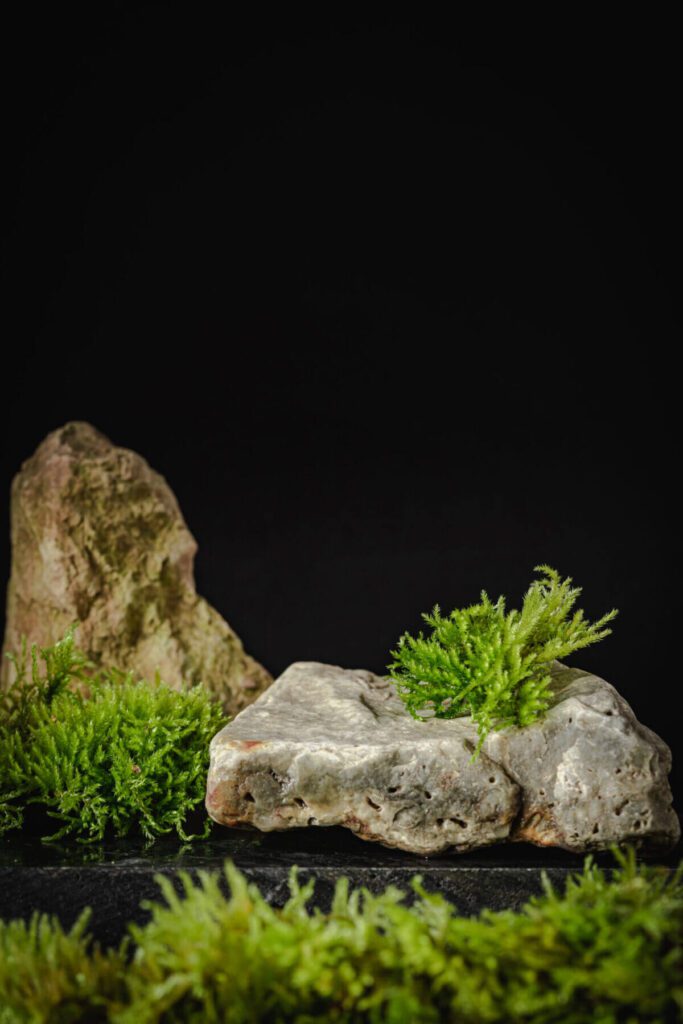
- Balance: This principle involves arranging elements to ensure no part of the aquascape overwhelms others. It’s about distributing visual weight symmetrically or asymmetrically to achieve a pleasing equilibrium. This can mean balancing the sizes, colours, and textures of rocks, substrates, and plant life throughout the tank.
- Focal Points: A focal point draws the viewer to a particular aquascape area. This could be a dramatic rock formation, a colourful coral, or a uniquely designed feature. Focal points capture attention and guide the viewer through the aquascape, creating a sense of movement and interest.
- Harmony: Harmony is achieved when all components of the aquascape work together to create a cohesive and unified whole. This involves the thoughtful selection and placement of materials that complement each other in colour, texture, and scale. The goal is to create an aquascape where the natural beauty of the aquarium inhabitants is enhanced, and the overall effect is one of peace and tranquillity.
Getting Started with Your Design
Creating a captivating aquascape for your reef aquarium begins with a solid plan. This stage is about envisioning the underwater world you wish to make, laying the groundwork for a beautiful and thriving aquatic environment.
Visualizing Your Layout
Visualizing your layout is the first step in transforming your aquascaping ideas into reality. Start sketching; you don’t need to be an artist to draft the basic outline of your aquarium landscape. Use simple shapes to represent rocks, corals, and other features. This process helps in spatial planning, ensuring your design is proportionate and balanced. Consider the rule of thirds to create a focal point, and imagine how your aquascape will look from various angles. Remember, the goal is to make a layout that’s not only aesthetically pleasing but also functional for the inhabitants of your aquarium. Experiment with different configurations on paper before deciding on the final design.
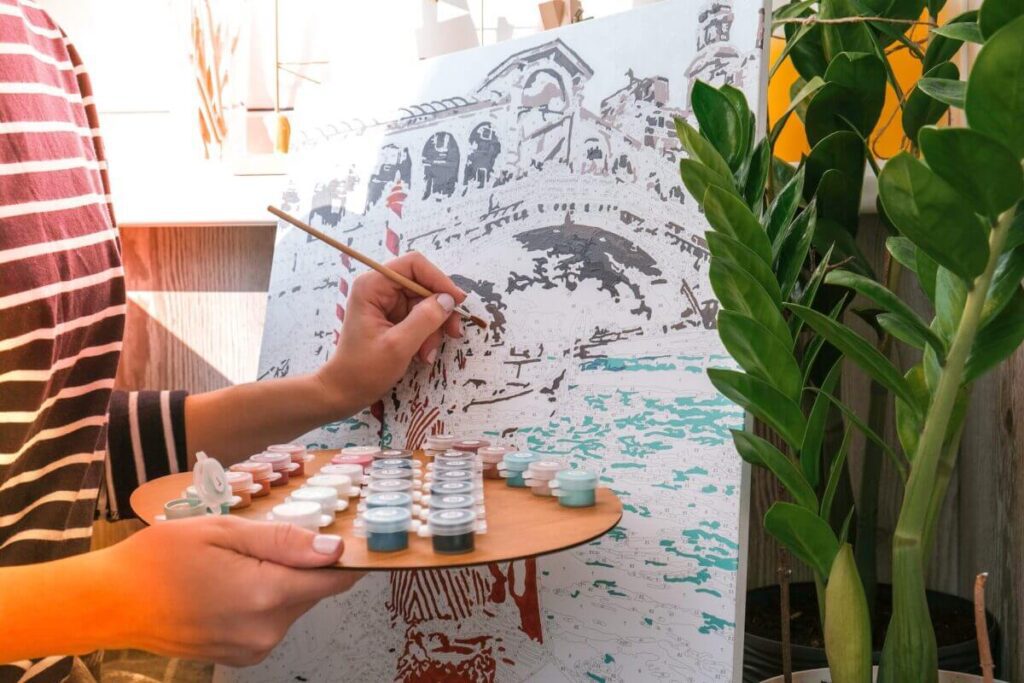
Choosing a Theme
Selecting a theme for your aquascape can significantly influence its overall appearance and feel. Themes can range from imitating natural reefs, with their intricate coral formations and diverse marine life, to more creative concepts like sunken shipwrecks or fantasy landscapes.

- Natural Reefs: This theme aims to mimic the complexity and beauty of natural coral reefs. Research different reef environments and try to replicate the types of rock formations, coral placement, and colour schemes found in nature. Pay attention to the diversity and density of elements to create a realistic representation.
- Shipwrecks: A shipwreck theme adds a sense of mystery and history to your aquarium. You can use cement to create custom shipwreck features or integrate safe, aquarium-appropriate decorations that resemble parts of a sunken vessel. This theme offers unique opportunities for creative aquascaping, allowing you to design around the nooks and crannies of the wreck for fish to explore.
- Fantasy Landscapes: For those who love to think outside the box, fantasy landscapes offer an endless canvas for creativity. Imagine creating an underwater city, a submerged castle, or an alien seascape. This theme lets you experiment with unusual shapes, vibrant colours, and imaginative structures, turning your aquarium into a fantastical underwater realm.
Each theme has its charm and challenges, so choose one that resonates with your preferences and the needs of your aquarium’s inhabitants. Remember, the selected theme will guide your decisions on the types of rocks, plants, and decorations to include in your aquascape, so take the time to consider your options carefully.
Selecting Materials for Your Aquascape
Types of Rocks and Substrates
Regarding hardscaping, rocks and substrates are not just aesthetic elements; they also provide crucial surfaces for beneficial bacteria to colonize, contributing to the ecosystem’s health. Cement rocks, especially, offer a unique advantage in custom aquascaping designs. Using cement, aquarists can create rocks of various shapes and sizes that perfectly fit their vision, which is not always possible with natural rocks. Cement rocks can be molded into intricate designs that mimic natural reef structures, providing an ideal backdrop for your aquatic scene.
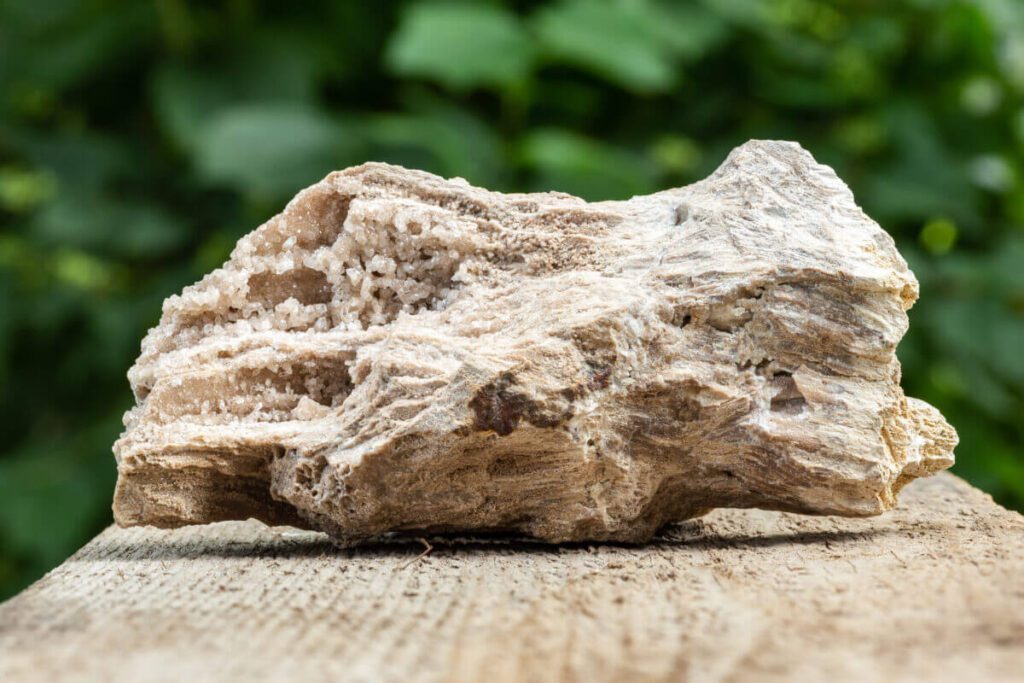
The benefits of using cement rocks in custom designs are manifold. Firstly, they allow for complete creative freedom, enabling you to design a layout that would be difficult to achieve with natural rocks. Secondly, cement rocks can be cost-effective, especially for larger projects where the cost of natural stones can be prohibitive. By creating your rocks, you can also ensure they are free from unwanted parasites or harmful bacteria that might hitch a ride on natural stones.
When selecting substrates, consider the grain size and colour that best match your design and the needs of your tank’s inhabitants. Substrates can range from fine sand, ideal for creatures that like to burrow, to larger pebbles that allow for better water flow through the aquarium bed.
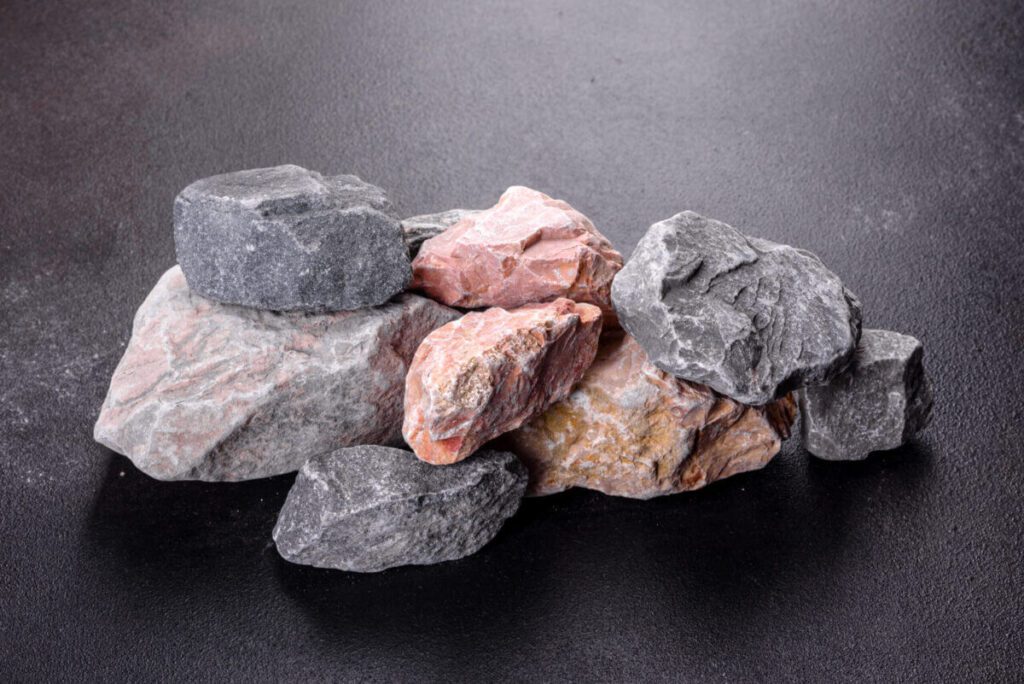
Incorporating Live Plants and Corals
Live plants and corals are the heartbeats of any reef aquarium, adding colour, life, and movement to your aquatic landscape. They also play a crucial role in the tank’s ecosystem, providing oxygen, absorbing CO2, and offering various marine creatures hiding spots and grazing areas.
When selecting species, aim for a mix that complements your design and thrives under similar light and water conditions. Consider the plants’ and corals’ growth patterns, colours, and textures for a harmonious aquascape. Fast-growing species can quickly fill empty spaces, while slower-growing varieties add longevity and stability to your design.
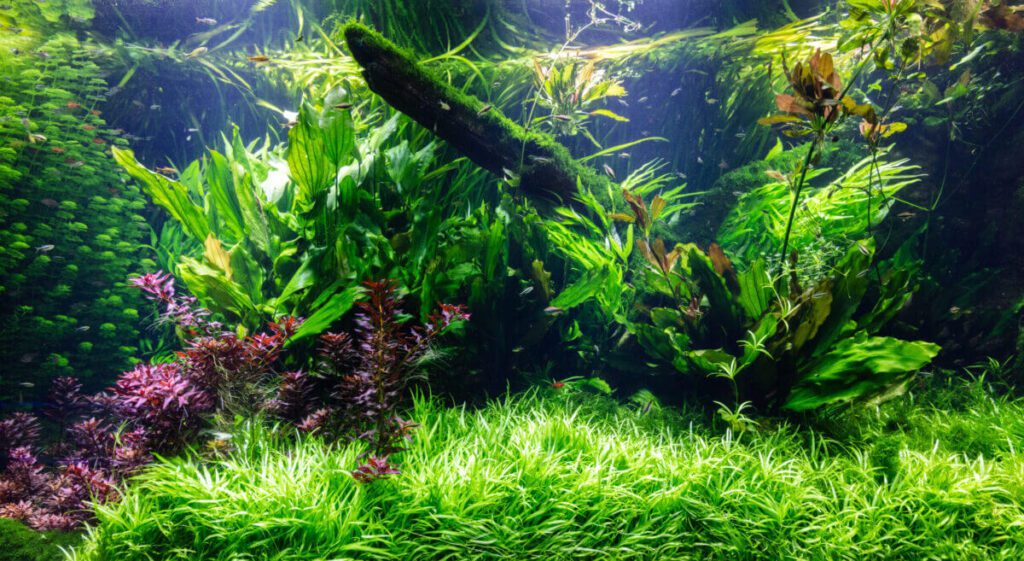
Choosing species based on their compatibility with each other and the fish in your aquarium is also essential. Some corals may have stinging tentacles that can harm neighbouring corals or fish, while certain plants might require substrates or water conditions unsuitable for others in your tank.
Incorporating a variety of live plants and corals enhances the beauty and diversity of your aquascape and contributes to a healthier and more balanced ecosystem. By carefully selecting these living components, you create a vibrant underwater world that is aesthetically pleasing and conducive to the well-being of its inhabitants.
Structuring Your Aquascape
Creating a captivating aquascape in your reef aquarium involves more than randomly placing rocks and plants. It requires a thoughtful approach to mimic the complexity and beauty of natural marine environments while catering to the needs of the aquarium’s inhabitants. This section explores techniques to create depth and perspective and how to design functional spaces within your aquascape.
Creating Depth and Perspective
One of the most effective ways to bring your aquascape to life is by creating a sense of depth and perspective. This illusion makes the aquarium appear larger and more intricate than its physical dimensions might suggest. Here are some techniques to achieve this effect:

- Layering: Start with larger rocks and elements in the back and progressively use smaller ones as you move forward. This technique creates the illusion of distance.
- Golden Ratio: Apply the golden ratio (approximately 1:1.618) to position your main focal point off-centre, naturally drawing the eye and making the scene more dynamic.
- Diagonal Lines: Arrange your rocks and substrates to form diagonal lines leading from the front to the back of the tank. This adds depth and guides the viewer’s gaze through the aquascape.
- Foreground, Midground, and Background: Clearly define these three zones in your tank. Use delicate substrates and low plants in the foreground, larger plants and rocks in the midground, and the tallest elements in the background.
- Light and Shadow: Utilize lighting strategically to cast shadows and highlight specific areas, enhancing the three-dimensional effect and adding to the perception of depth.
Building Functional Spaces
While aesthetics are important, your aquascape must also serve the needs of your tank’s inhabitants. Creating functional spaces means designing with the behaviour and requirements of your fish and invertebrates in mind:
- Hiding Spots: Use caves, overhangs, and crevices between rocks to shelter your fish. These hiding spots are crucial for the well-being of many species, offering them a sense of security.
- Swim-throughs: Arrange your rocks and structures to create tunnels and archways. These add visual interest and encourage natural swimming behaviour and exploration.
- Territories: Significant for species that establish territories and ensure distinct areas within the aquascape. This can help reduce aggression and stress among tank inhabitants.
- Varied Substrate Areas: Different species prefer different substrates. Include fine sand for bottom dwellers and coarser gravel where appropriate, catering to the natural preferences of your aquarium’s inhabitants.
- Accessibility for Maintenance: While designing, consider how you’ll access various tank parts for cleaning and maintenance. Ensure that your design allows for the easy removal of detritus and algae without disrupting the entire aquascape.
Finalizing Your Design Plan
When you’ve sculpted your vision and gathered your materials, the next step is to refine your aquatic masterpiece’s blueprint, ensuring its beauty and the well-being of its inhabitants. This phase bridges your creative endeavours with the practicalities of aquatic life, focusing on two pivotal aspects: the lighting and water flow and the importance of a mock setup.
Lighting and Flow Considerations
How to choose and position lights and water flow for health and aesthetics:
- Choosing the Right Lighting: The selection of lighting is paramount, as it influences not just the visual appeal of your aquarium but also the health of its corals and plants. Opt for LED lights that mimic the natural light spectrum, providing both the intensity and colour range needed for photosynthesis in aquatic plants and corals. Consider the depth of your tank and the needs of your specific species when selecting your lighting setup.
- Positioning for Optimal Growth and Viewing: Position your lights to evenly distribute illumination across the entire aquascape, ensuring no area is left in the shadow unless intentionally designed. Adjustable lights can be directed to highlight focal points and create dramatic shadows, enhancing the three-dimensional effect of your aquascape.
- Water Flow for a Natural Environment: Water flow in your aquarium should mimic the natural currents that marine life is accustomed to. Use a combination of pumps and powerheads to create a flow pattern that circulates water throughout the tank, avoiding dead spots and ensuring waste products are directed towards the filtration system. The proper flow delivers nutrients to corals and plants and stimulates their growth by simulating their natural habitat.
Mock Setup and Adjustment
Setting up a dry run of your aquascape to finalize the placement of elements:
- The Value of a Dry Run: Before introducing any water, it’s wise to arrange your rocks, substrates, and other design elements in a dry setup. This allows you to adjust the composition without water weight and buoyancy constraints. It’s an opportunity to experiment with different layouts, ensuring your design is aesthetically pleasing and functional.
- Adjustment for Aesthetics and Accessibility: During the mock setup, pay close attention to the accessibility of all areas within the aquarium. You’ll need to maintain these spaces to easily reach any point without disturbing the design. This is also the time to adjust the positioning of your lighting and flow devices, ensuring they complement the layout and provide optimal conditions for the tank’s inhabitants.
- Finalizing Your Design: Once satisfied with the mock setup, take photographs from various angles. These will be your reference when transitioning the design from a dry to a wet setup. Remember, the layout should be pleasing to the eye from all visible angles, ensuring a captivating view, whether standing directly in front or peering from the side.
Bringing Your Design to Life
Transforming your meticulously planned aquascape design into a tangible, thriving ecosystem is exciting. It requires patience, precision, and a bit of creativity. The transition from design to reality is not just about placing rocks and plants; it’s about creating a living piece of art that evolves.
Step-by-Step Implementation
Before we start the event, build a couple of pre-start activities if you like.
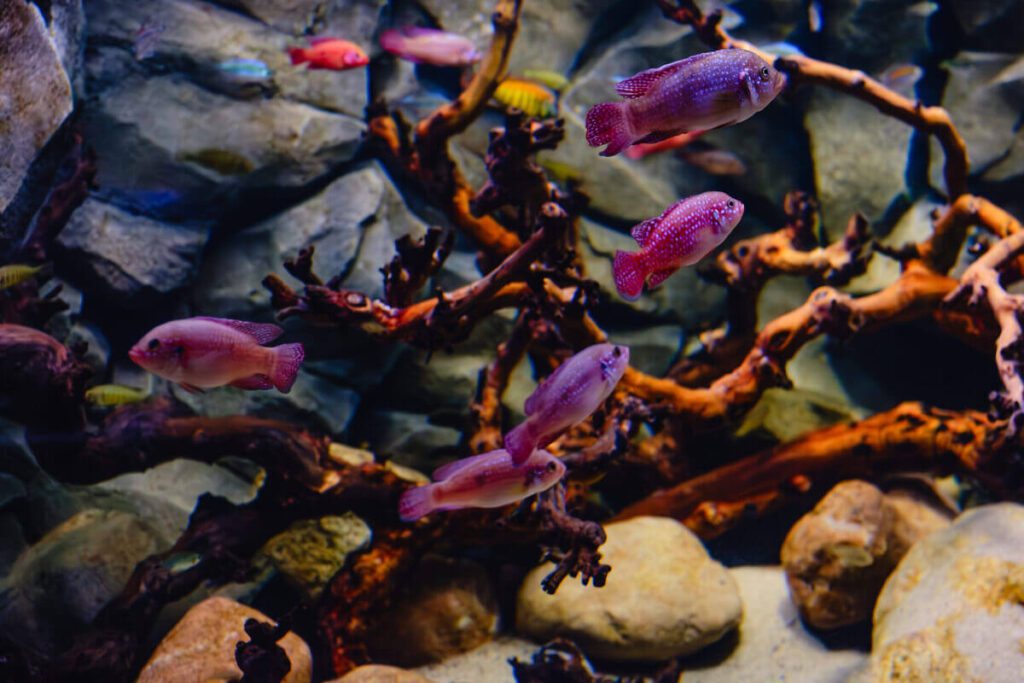
Sketching and Planning:
- Start by sketching a rough layout of your desired aquascape, including the placement of rocks, plants, and other decorations. This will help you visualize the final product and make any necessary adjustments early in the process.
- Use a ruler or straightedge to ensure proper spacing between elements and maintain symmetry in your design.
- Consider using software like SketchUp or Photoshop to create more detailed mockups of your aquarium layout. These tools allow you to experiment with different arrangements and adjust as needed.
Gathering Materials:
- Make a list of all the materials you’ll need for your project, including rocks, sand, gravel, plants, and other decorations or equipment (e.g., filters, heaters, etc.).
- Research different types of rocks and substrates to find the best options for your desired aquascape style and environment.
- Choose plants suitable for your tank’s lighting conditions, water chemistry, and overall aesthetic.
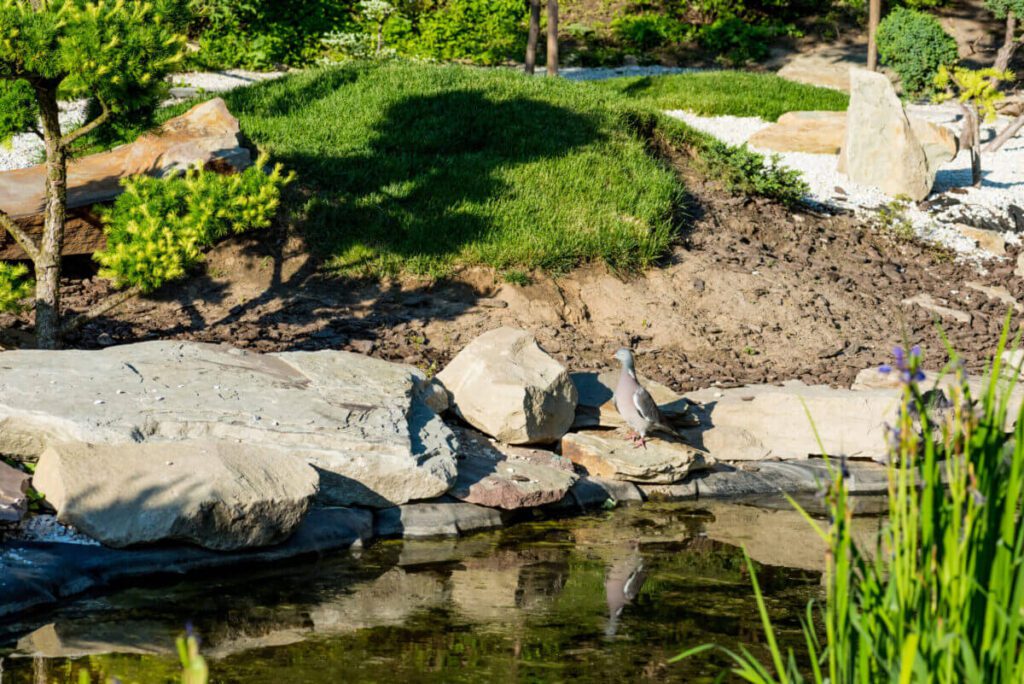
The implementation begins with ensuring all your materials—cement rocks, substrates, plants, and decorations—are prepared and safe for use in an aquarium. Start by:
- Layering the Substrate: Begin with a base layer of substrate tailored to your plant’s needs. This is crucial for plant growth and helps in water filtration. Ensure the substrate is levelled and positioned according to your design plans, creating desirable slopes or valleys.
- Placing the Cement Rocks: Arrange your custom-made cement rocks according to your layout. Start with the most prominent pieces to form the backbone of your aquascape, and then add smaller rocks to create depth and complexity. Remember, the placement should look natural and provide plenty of hiding spots and territories for your tank inhabitants.
- Adding Water: Slowly fill the tank with water to avoid disturbing the layout. Using a plate or bowl to disperse the water can help maintain the structure of your aquascape.
- Installing Equipment: Position heaters, filters, and circulation pumps, ensuring they are hidden but effective. This step might require some adjustments to the rock placements to accommodate equipment discreetly.
- Planting: Introduce live plants, corals, or other sessile organisms into your aquascape. Use tweezers for precise placement, embedding roots in the substrate or attaching them to rocks with safe, aquarium-grade adhesives.
- Final Touches: Add any additional decorations or elements that complement your design. This could include driftwood, caves, or artificial structures that enhance aesthetics without compromising the environment’s safety.
Monitoring and Tweaking
After bringing your design to life, the journey isn’t over. An aquascape is a living, breathing entity that grows and changes over time. Monitoring and tweaking are vital for maintaining its beauty and health.
- Regular Checks: Daily observation helps catch any issues early, such as plant die-offs, algae growth, or stressed inhabitants. Pay attention to water clarity, flow patterns, and the behaviour of your tank’s residents.
- Water Parameters: Closely on water parameters, including pH, ammonia, nitrites, and nitrates. Regular testing ensures the environment remains safe and stable for your aquatic life.
- Pruning and Cleaning: As plants grow, they may need pruning to keep your aquascape neat and prevent them from overshadowing other elements. Algae can also become an issue, requiring manual removal or the introduction of natural algae eaters.
- Adjustments: Over time, you might find that some elements of your design aren’t working as expected. Perhaps a plant isn’t thriving in its location, or a rock structure is inhibiting flow more than anticipated. Don’t hesitate to make adjustments. Moving plants, tweaking rock placements, or adjusting lighting can significantly impact your aquascape’s health and appearance.
Check the rest of the series.
- Choosing the Right Materials: Delving into the specifics of selecting the safest and most effective types of cement and additives, ensuring the well-being of your aquatic inhabitants.
- Design and Planning: Guidance on conceptualising and sketching your dream aquascape, including considerations for the spatial needs of different marine species.
- Mixing and Molding Techniques: Step-by-step instructions on preparing and shaping your cement mixture into natural-looking rocks and formations.
- The Curing Process Explained: A detailed walkthrough to ensure your creations are safe for your aquarium, focusing on leaching techniques to neutralise pH.
- Installing Your DIY Rocks: Tips on strategically placing your rocks within the aquarium to achieve aesthetic balance and provide functional benefits for your marine life.
- Advanced Aquascaping Techniques: We’ll cover advanced methods for creating intricate structures and dynamic landscapes for those looking to take their skills further.
- Maintenance and Troubleshooting: Practical advice on maintaining your cement structures and addressing common issues that may arise over time.
Summary
In this article, we’ve explored the transformative journey of bringing an aquascape design to life, offering a detailed guide that navigates through the meticulous process of layering substrates, positioning custom-made cement rocks, planting, and the crucial steps of monitoring and tweaking the evolving aquatic landscape.
This journey from design to reality is about aesthetic fulfilment and creating a sustainable and thriving ecosystem for aquatic life. The article underscores the importance of precision, patience, and adaptability as critical virtues in crafting a living piece of art that resonates with the beauty and complexity of marine environments.
As you embark on this creative endeavour, remember that the journey doesn’t end with the final placement of a plant or stone. An aquascape is a dynamic, living entity that demands ongoing attention and care. Regular monitoring, adjusting water parameters, pruning, and cleaning are essential next steps to ensure the health and longevity of your aquatic landscape.
We encourage you to embrace the evolving nature of your aquascape, making adjustments as needed to maintain its beauty and vitality. Let this guide inspire you to create, innovate, and continuously engage with your aquatic masterpiece.
For further guidance, tips, and inspiration, consider joining aquascaping forums, attending workshops, and connecting with fellow enthusiasts. Your dream reef aquarium is within reach—dive in, design, and transform your aquatic vision into a breathtaking reality.
aquarium design ideas, reef tank layouts, custom aquarium landscapes, aquascaping techniques, marine aquarium design, DIY reef structures, underwater landscaping, aquascape planning, cement for aquariums, sustainable reef designs, creative aquascaping, aquarium theme ideas, natural reef simulation, artificial reef making, aquascaping materials, aquascape depth creation, aquarium lighting design, water flow in aquascapes, aquascaping for beginners, enhancing aquarium aesthetics

